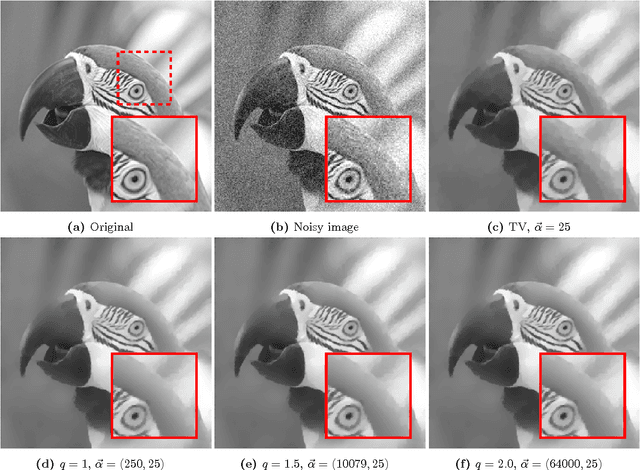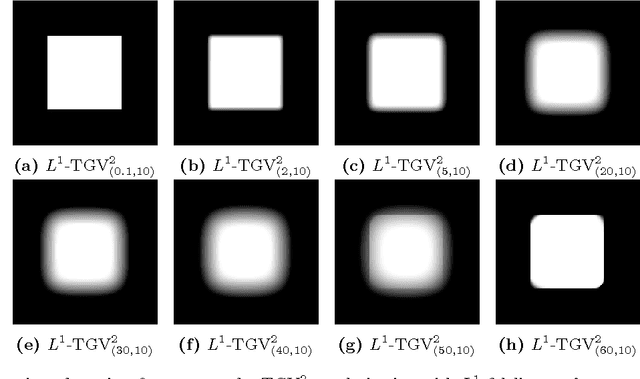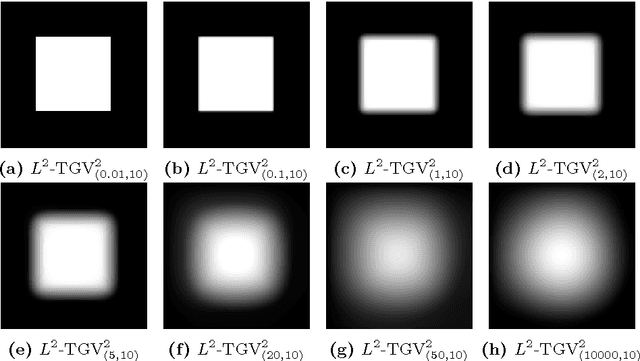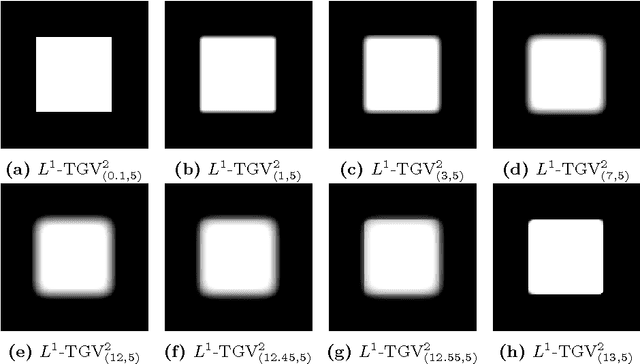The jump set under geometric regularisation. Part 2: Higher-order approaches
Paper and Code
Jul 09, 2014



In Part 1, we developed a new technique based on Lipschitz pushforwards for proving the jump set containment property $\mathcal{H}^{m-1}(J_u \setminus J_f)=0$ of solutions $u$ to total variation denoising. We demonstrated that the technique also applies to Huber-regularised TV. Now, in this Part 2, we extend the technique to higher-order regularisers. We are not quite able to prove the property for total generalised variation (TGV) based on the symmetrised gradient for the second-order term. We show that the property holds under three conditions: First, the solution $u$ is locally bounded. Second, the second-order variable is of locally bounded variation, $w \in \mbox{BV}_\mbox{loc}(\Omega; \mathbb{R}^m)$, instead of just bounded deformation, $w \in \mbox{BD}(\Omega)$. Third, $w$ does not jump on $J_u$ parallel to it. The second condition can be achieved for non-symmetric TGV. Both the second and third condition can be achieved if we change the Radon (or $L^1$) norm of the symmetrised gradient $Ew$ into an $L^p$ norm, $p>1$, in which case Korn's inequality holds. We also consider the application of the technique to infimal convolution TV, and study the limiting behaviour of the singular part of $D u$, as the second parameter of $\mbox{TGV}^2$ goes to zero. Unsurprisingly, it vanishes, but in numerical discretisations the situation looks quite different. Finally, our work additionally includes a result on TGV-strict approximation in $\mbox{BV}(\Omega)$.
 Add to Chrome
Add to Chrome Add to Firefox
Add to Firefox Add to Edge
Add to Edge